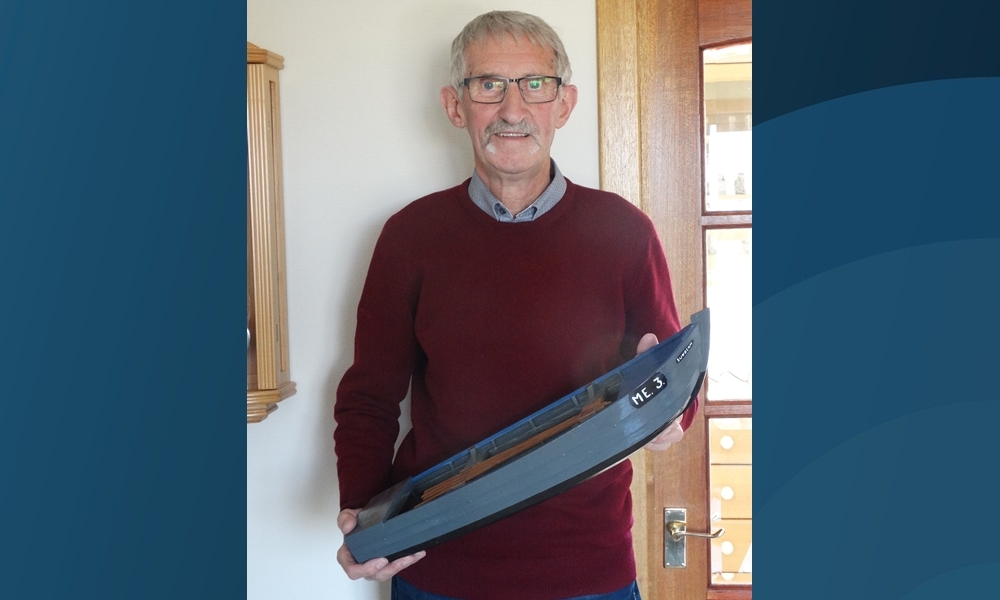On the outskirts of Montrose, by the roundabout as you drive south under the red brick railway viaduct, is a salmon coble filled with earth and planted out with summer flowers.
These blue/grey fishing boats were a familiar sight on our north-east coast until about 20 years ago when the Scottish commercial salmon netting industry began to decline.
Seeing it brought back a host of memories going back to my childhood.
It happened that I’d been watching a Scottish Film Archive documentary on the building of a coble in the carpenter’s shop of commercial salmon fishers Joseph Johnston and Sons of Montrose.
Foreman boatbuilder and carpenter was Tom Easton and earlier in the week I visited him and his wife, Christine, and had a thoroughly enjoyable hour talking boats and salmon fishing.
The cobles were specialist boats built to service the coastal salmon nets which were part of the Scottish coastal landscape until farming of salmon in cages began to undercut the traditional industry.
You’ll still see examples of the old boats, hauled up on riverbanks or above the shoreline and left to the doubtful mercies of the elements, sad reminders of a major industry and major source of employment both on the water and on land.
Traditional method
Netting salmon was an ancient method of fishing which changed little in its essential methods over several centuries.
Likewise the building of cobles was to a traditional shape using traditional methods.
Clinker-built – planks overlapping each other – the boats are flat bottomed to enable them to work close inshore and be easily hauled up on the sandy beaches where many of the nets were sited.
Their high bow was developed to throw off the water and keep the crew dry when the boats put out from shore often into breakers and rough seas.
Before the days of power they had up to six oars and some had sails.
The cobles ranged in length from 13ft for a two-oared river boat to 28½ft for a sea-going boat.
The film shows one of the larger boats being built from the keel upward with larch planking on oak frames. It took 12 weeks to build the biggest boats.
I could almost smell the wood shavings as I watched the flared bow growing out from the stem, a sea kindly shape to deal with the short seas it would be used in.
While there was a nod in the direction of modern machinery such as band saws, which took the toil out of hand sawing the long planks and saved time, traditional hand tools were preferred for much of the work.
Copper rivets were used to fasten the planks together and that took me back to my childhood and watching my father building his own boat in this traditional manner.
One of the carpenters is shown using an adze, an axe with a curved blade set at right angles.
It is swung downwards towards the timber and when used in experienced hands is a formidable tool which can shave off paper-thin shavings.
Great Pride
Tom explained that all the oars for every boat made in his workshop were cut entirely with the adze.
His pride in his skills and pleasure in his work as a boatbuilder – which he was for more than 35 years – is obvious.
I asked if he could always recognise a boat that he had built and he just smiled – I suppose it’s the same with any artist.
But he might have been helped by his signature carved salmon affixed to the stern of every boat that left Johnston’s workshop in his time.
It meant the boat was never without at least one fish, and that’s pretty important for salmon fishermen whose livelihood depends on catching them.
It gives Tom great satisfaction one of his cobles is part of the collection of historic fishing boats held by the Scottish Fisheries Museum in Anstruther.
It is important to keep alive the heritage of memories of a method of fishing and a particular way of life future generations are unlikely to see revived.
Love of sea
Tom reckons he saw out the end of the great days of wooden boatbuilding.
He grew up in the fishing community of Ferryden with an enduring love of the sea and boats and never wanted to do anything else but build them – an enviable way to be able to live your life.
He still has all his tools, although after leaving Joseph Johnston he never built another boat.
That chapter of his life drew to a close when he retired but he misses the smell of freshly worked wood that infused the workshop.
And Christine says she misses the distinctive, clean smell on his clothes when he came home from work.
